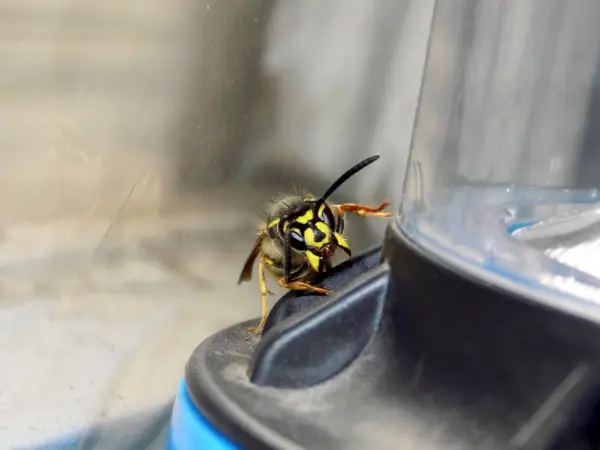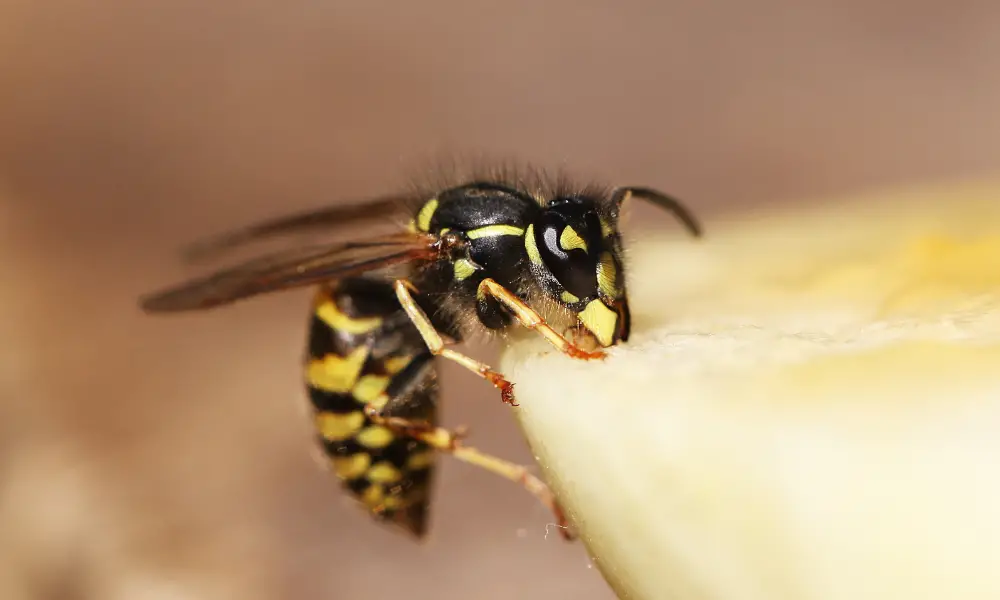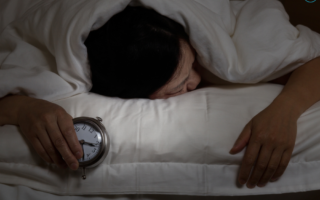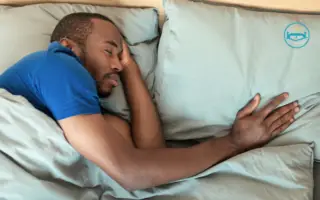Sleeping with a wasp in your room is risky. Wasps can sting if they feel threatened.
Wasps in your room can cause anxiety and danger. These insects can sting multiple times, posing a threat, especially to those allergic to their venom. A wasp sting can be painful and potentially lead to severe allergic reactions. Ensuring your sleeping area is free of wasps is crucial for a peaceful and safe night.
Simple measures, like closing windows and using insect repellent, can help. Taking immediate action to remove the wasp safely can prevent any potential harm. Always prioritize your safety and comfort.
Table of Contents
Risks Of Sleeping With A Wasp In Your Room
Have you ever found a wasp in your room and wondered, “Can I sleep with a wasp in my room?” The thought alone can be quite unsettling. There are significant risks of sleeping with a wasp in your room that you should be aware of.
Stings And Allergies
Wasps are known for their painful stings. Wasp stings can occur while you sleep, especially if you inadvertently roll over or disturb the wasp. These stings can cause intense pain and discomfort.
Here are some of the potential risks associated with wasp stings:
- Pain and Swelling: The sting site may become red, swollen, and extremely painful.
- Allergic Reactions: Some people may experience severe allergic reactions, known as anaphylaxis. This can be life-threatening and requires immediate medical attention.
- Multiple Stings: If there is more than one wasp, you risk getting stung multiple times.
For those with allergies, even a single sting can lead to serious issues. Symptoms of an allergic reaction include:
| Symptom | Description |
|---|---|
| Hives | Red, itchy welts on the skin |
| Swelling | Swelling of the face, lips, throat, or tongue |
| Difficulty Breathing | Shortness of breath or wheezing |
| Dizziness | Feeling faint or lightheaded |
It’s crucial to recognize these symptoms and seek emergency medical care if they occur.
Infection Risks
Stings from wasps can also lead to infections. Infections may develop if the sting site isn’t properly cleaned and treated. Here are some common infection risks:
- Cellulitis: A bacterial infection that causes redness, swelling, and pain in the affected area.
- Abscess: A collection of pus that forms in response to infection.
- Sepsis: A severe infection that spreads throughout the body, potentially leading to organ failure and death.
Signs of infection include:
- Increasing redness around the sting site
- Warmth and tenderness in the area
- Pus or drainage from the sting site
- Fever and chills
To reduce infection risks:
- Clean the sting site with soap and water.
- Apply an antiseptic to the area.
- Keep the area covered with a sterile bandage.
- Monitor for signs of infection and seek medical attention if needed.
Being aware of these risks can help you make informed decisions about your safety.
How To Safely Remove A Wasp From Your Bedroom
Finding a wasp in your room can be alarming. The buzzing noise and potential sting make it hard to sleep. But don’t worry! You can safely remove the wasp and get back to your peaceful sleep. Follow these steps to ensure your safety and the wasp’s removal without harm.
Room Preparation
Before attempting to remove a wasp, prepare your room to avoid any mishaps. Turn off all lights except the one nearest to the window. Wasps are attracted to light and will likely head towards it.
Close all doors to prevent the wasp from escaping to other parts of your home. This makes it easier to contain and remove the wasp.
Wear protective clothing such as long sleeves, pants, and gloves. This minimizes the risk of getting stung.
- Gather necessary tools: a glass jar or cup, a piece of cardboard, and a flashlight.
- Ensure pets and children are safely out of the room.
- Keep your movements slow and calm to avoid agitating the wasp.
By preparing your room, you can ensure a smoother and safer wasp removal process.
Wasp Removal Techniques
Several techniques can help you safely remove a wasp from your bedroom.
Method 1: The Glass Jar Method. Use a glass jar or cup and a piece of cardboard to trap the wasp. Slowly approach the wasp and place the jar over it. Then, slide the cardboard between the jar and the surface, trapping the wasp inside. Carefully carry the jar outside and release the wasp.
Method 2: The Light Trap. Turn off all lights except a flashlight aimed at an open window. The wasp will be drawn to the light and will likely fly out of the window. Close the window once the wasp exits.
Method 3: The Vacuum Cleaner. Use a vacuum cleaner with a hose attachment. This method is quick and effective but should be used with caution. Once you vacuum the wasp, immediately take the vacuum outside and release the wasp.
Method 4: Professional Help. If you’re uncomfortable or allergic to wasp stings, call a professional pest control service. They have the expertise and equipment to safely remove the wasp.
Choose the method that best suits your situation. Always prioritize safety and remain calm throughout the process.

Natural Deterrents
Sleeping with a wasp nearby is risky because wasps can sting if they feel threatened. Instead of using chemical sprays, you can use natural deterrents to keep wasps away.
Essential Oils
Essential oils are a fantastic way to repel wasps naturally. Wasps dislike certain strong scents, making essential oils a great option. Here are some effective essential oils you can use:
- Peppermint Oil: Wasps hate the smell of peppermint. Mix a few drops of peppermint oil with water and spray it around your room.
- Eucalyptus Oil: Another strong scent that wasps avoid. Use a few drops in a diffuser or mix it with water to spray.
- Lemongrass Oil: This oil not only repels wasps but also smells refreshing. Create a spray by mixing it with water.
You can make a simple spray using these essential oils. Here is a quick recipe:
| Ingredients | Quantity |
|---|---|
| Water | 1 cup |
| Essential Oil (Peppermint, Eucalyptus, Lemongrass) | 10 drops |
Mix the essential oil with water in a spray bottle. Shake well before each use. Spray the mixture around your room, focusing on windows and doorways.
Plants That Repel Wasps
Certain plants can also help keep wasps away from your room. These plants naturally repel wasps due to their strong scents. Here are some plants you can consider:
- Mint: Wasps dislike the strong scent of mint. Place mint plants near windows or in your room.
- Citronella: Known for repelling mosquitoes, citronella also works against wasps. Keep citronella plants in pots inside your room.
- Wormwood: This plant has a strong smell that deters wasps. Place wormwood plants around your room for best results.
These plants not only keep wasps away but also add greenery to your room. Here is a quick guide to placing these plants:
| Plant | Placement |
|---|---|
| Mint | Near windows, on shelves |
| Citronella | In corners, near doorways |
| Wormwood | On windowsills, near beds |
By using these natural deterrents, you can keep wasps out of your room and ensure a peaceful night’s sleep.
Emergency Response
Sleeping with a wasp in your room can be unnerving. These insects can sting if they feel threatened. An emergency response is crucial to ensure safety and minimize harm.
First Aid For Stings
If a wasp stings you, act quickly to reduce pain and swelling. Here are steps to follow:
- Remove the stinger: Use a clean, flat object like a credit card. Do not use tweezers as they can squeeze more venom into the skin.
- Clean the area: Wash the sting site with soap and water. This helps prevent infection.
- Apply a cold pack: Use ice wrapped in a cloth. This reduces swelling and numbs the pain.
- Take pain relievers: Over-the-counter medications like ibuprofen can help.
- Use antihistamines: These can reduce itching and swelling.
Having a first aid kit handy is always a good idea. Here’s a quick table of essentials:
| Item | Purpose |
|---|---|
| Antiseptic wipes | Clean the sting area |
| Cold pack | Reduce swelling |
| Pain relievers | Alleviate pain |
| Antihistamines | Reduce itching |
When To Seek Help
Sometimes, a wasp sting can cause severe reactions. Knowing when to seek medical help is vital.
- Allergic reactions: If you experience difficulty breathing, swelling of the face or throat, or dizziness, seek immediate medical attention.
- Multiple stings: Multiple stings can cause more venom to enter your body. This can be dangerous, especially for children and the elderly.
- Signs of infection: If the sting area becomes red, warm, or oozes pus, this could indicate an infection.
- Persistent symptoms: If pain and swelling do not reduce after a few days, consult a doctor.
Here’s a quick guide on symptoms to watch for:
| Symptom | Action |
|---|---|
| Difficulty breathing | Call emergency services |
| Swelling of face/throat | Seek immediate help |
| Red, warm sting area | Consult a doctor |
| Multiple stings | Visit urgent care |
Understanding these emergency responses ensures safety and peace of mind.
Wasp Control Methods
Wasp control methods can help you deal with this issue effectively. Let’s explore some DIY solutions and when it’s best to call for professional help.
Diy Solutions
Dealing with a wasp in your room can be daunting, but there are several DIY solutions to consider. These methods are easy to implement and can be done with common household items.
1. Trap the Wasp:
- Use a glass and a piece of paper to trap the wasp against a window.
- Slide the paper under the glass, then release the wasp outside.
2. Create a Homemade Wasp Trap:
- Cut the top off a plastic bottle.
- Invert the top into the bottom half, creating a funnel.
- Fill the bottom with a sweet liquid like sugar water.
- The wasp will enter the trap but find it hard to escape.
3. Use Essential Oils:
Essential oils like peppermint, clove, and lemongrass can repel wasps. Mix a few drops with water in a spray bottle and spray around windows and doors.
4. Seal Entry Points:
Inspect your room for any holes or cracks where wasps might enter. Use caulk to seal these entry points.
5. Maintain Cleanliness:
Wasps are attracted to food and trash. Keep your room clean and free of food scraps and garbage.
Professional Help
Professional help becomes necessary if you have a wasp infestation or if DIY methods fail. Professionals have the expertise and tools to handle wasps safely and efficiently.
1. Pest Control Services:
Hiring a pest control service ensures that the wasps are dealt with professionally. These experts use safe and effective methods to remove wasps and prevent them from returning.
- They conduct a thorough inspection of your home.
- They identify the wasp species and locate nests.
- They use specialized equipment and insecticides.
2. Wasp Nest Removal:
If you find a wasp nest in or near your home, do not attempt to remove it yourself. Professional pest controllers can remove nests safely, preventing any potential harm from wasp stings.
3. Ongoing Maintenance:
Professional services often offer ongoing maintenance plans. These plans include regular inspections and treatments to keep your home wasp-free.
4. Emergency Services:
Many pest control companies offer emergency services. If you discover a wasp infestation at night or over the weekend, professionals can quickly address the issue.
Table: Comparison of DIY Solutions and Professional Help
| Aspect | DIY Solutions | Professional Help |
|---|---|---|
| Cost | Low | Moderate to High |
| Effectiveness | Varies | High |
| Safety | Moderate | High |
| Time Required | Immediate | Depends on service availability |
Frequently Asked Questions
Will A Wasp Sting You While You’re Sleeping?
Yes, a wasp can sting you while you’re sleeping. Wasps sting when they feel threatened or disturbed. Keep your sleeping area free of wasps to prevent stings.
What To Do If I Have A Wasp In My Room?
Stay calm and avoid swatting it. Open a window and turn off the lights. Use a container to trap and release it outside.
How Long Can A Wasp Survive In A Room?
A wasp can survive in a room for several days. It depends on food availability and environmental conditions.
Why Is There A Wasp In My Room At Night?
Wasps may enter your room at night seeking warmth or light. Seal windows and doors to prevent entry.
Conclusion
Sleeping with a wasp in your room is risky and uncomfortable. It’s better to remove it safely. Use protective measures and gentle methods to relocate the wasp. Ensuring your room is insect-free promotes better sleep and peace of mind. Prioritize your safety and take action to avoid potential stings.



